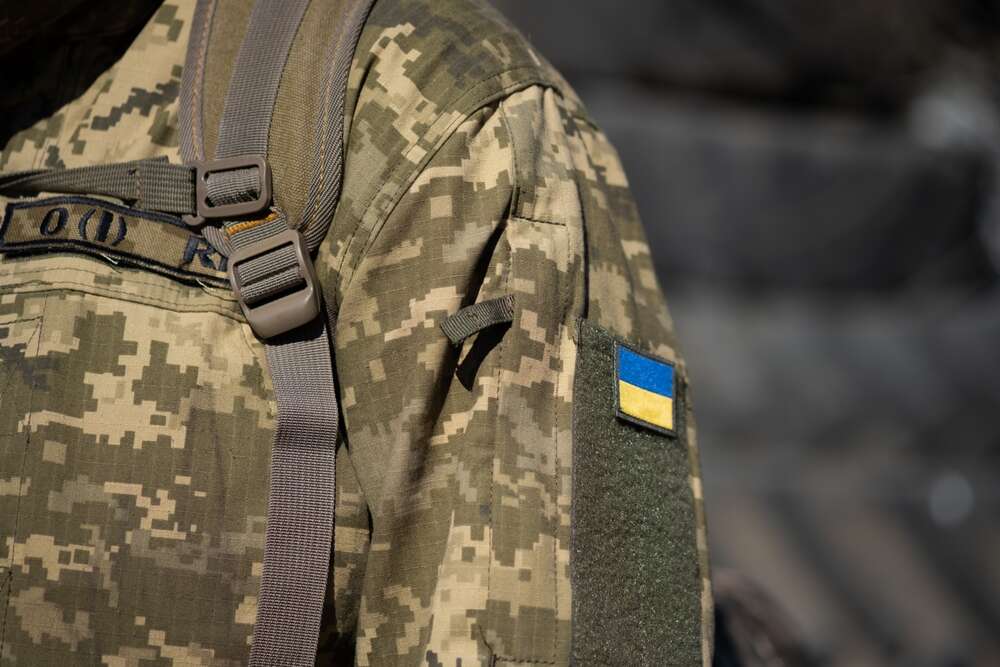
In the first weeks after the outbreak of Russia’s full-scale invasion last February, crypto donations were “critically helpful to Ukraine,” Mykhailo Fedorov, Ukraine’s minister for digital transformation, told reporters at the World Economic Forum in January. Contributions from around the world flowed into Ukraine’s coffers, just at the moment when its future as an independent nation seemed most in doubt. By March 3, 2022, just a week after its citizens awoke to wailing air raid sirens and the tell-tale thump and roar of missile strikes, crypto-asset donations to Ukraine totalled an estimated $54.7m.
What’s more, crypto “turned out to be a very fast and easy-to-use financial tool,” says Alex Bornyakov, Ukraine’s deputy minister for digital transformation. Many of the initial donations made to the war effort were channelled towards bullet-proof vests, helmets, and walkie-talkies for front-line soldiers. Bornyakov admits that even he — a long-time crypto advocate — was surprised by suppliers’ willingness to deal in Bitcoin. Now, Fedorov and Bornyakov are seeking to use crypto to help secure Ukraine’s post-war future. Amid a wider push for digitalisation across its economy, Kyiv will, Fedorov told the WEF, aspire to becoming “the best crypto jurisdiction in the world.”
How much that will aid in rebuilding Ukraine is open to debate. While Bornyakov is optimistic about all things crypto — the sector, he says, “has enormous potential to encourage economic growth and boost employment” — donations have slowed substantially since the opening days of the war. That’s, in large part, thanks to a ‘crypto winter’ that has frozen inflows of venture capital into the sector and triggered a cascade of market failures. Ukraine, therefore, may be left in the curious position of becoming the most crypto-friendly jurisdiction in the world — but without a market to service by the time they win the war.

Behind Ukraine’s crypto ambitions
Andrei Kirilenko, for one, remains optimistic. Kirilenko, who was born in Mariupol and is currently a professor in finance at Cambridge’s Judge Business School, recently headed an executive education programme in partnership with the National Bank of Ukraine that focused on rebuilding Ukraine’s financial sector. During the eight-week programme, Kirilenko taught a section on blockchain and crypto assets, which he thinks should be a major component of Ukraine’s post-war economy.
It’s important to note, explains Kirilenko, that Ukraine wasn’t a wealthy country before Russia’s full-scale invasion: in December 2021, its GDP stood at $200bn, or about $5,000 per capita. “That’s the baseline,” he says. “Private money was not really flowing into the economy. Banks were not increasing credit to private companies in real terms. The economy was not really growing.” Crypto was, therefore, already playing a bigger role in Ukraine than in the rest of Europe, he says, because banks and markets — although stable — “could not necessarily provide the services that were needed”.
Russia’s brutal attacks have only worsened the country’s financial situation, with its GDP falling by more than 30% in 2022 and unemployment rising to about a quarter of the population by the end of the year. An estimated 8 million people — mainly women and children — have fled the country and “nothing economic is happening,” explains Kirilenko, in large swathes of territory due to ongoing occupation or active combat. “No companies are being created, no people are being hired,” says the economist. “The soldiers are being paid but they can’t even spend their money there.”
As such, argues Kirilenko, the Ukrainian economy is effectively on life support. Starting from this low base, crypto won’t be a cure-all, he says. Nevertheless, it should “absolutely play a role in the collective effort” to reconstruct Ukraine’s physical infrastructure and shattered economy, says Kirilenko — especially since the country’s traditional banks and markets might not be up to the task.
That’s not to say that Ukraine’s recovery could be completely financed through crypto. A recent World Bank report estimated that Ukraine will need at least $411bn over the next decade to rebuild, which is more than a third of the value of all existing cryptocurrency, according to CoinMarketCap. Nevertheless, Kirilenko thinks it’s essential for Ukraine to pursue non-traditional finance options. “The banks and markets were not lending to the private sector before the war and were not investing in companies before the war,” he says. “How are they going to do it after the war?”
A crypto kind of crisis
The crypto community, unlike the governments of many countries in Europe, “believed in Ukraine from day one,” says Bornyakov. That’s partly because the country was already deeply embedded in it. Ukrainians held senior positions at global crypto companies and exchanges and Kyiv had set its stall out to become a world centre for decentralised currency even before rising hostilities from Russia in early 2022 threatened to scare off investors.
But has crypto’s role in shoring up the Ukrainian defence in the opening days of the war been overstated? Donations — especially after those initial weeks of chaos — pale in comparison with contributions from international allies. In total, more than $200m of cryptocurrencies and NFT donations have made their way to what have been described as pro-Ukraine causes, including more than $80m that went directly to the Ukrainian government, according to data provided by analytics company Elliptic to the Financial Times. Meanwhile, EU Commission President Ursula Von der Leyen announced last October that Brussels aims to contribute €1.5bn every month in 2023, adding up to a total of €18bn in 2023. The UK alone also provided £2.3bn in military support to Ukraine in 2022 and has already committed the same level of support in 2023.
Even so, crypto has continued to play a positive role in the margins of the conflict, particularly when it comes to facilitating humanitarian aid. More than 13 million people have been displaced from their homes since Russia’s full-scale invasion of Ukraine last February, facing human suffering and hardship “beyond comprehension,” according to UNHCR’s Regional Director for Europe. Accessing money is essential to their survival, but cash can be slow and tricky to move around the traditional banking system, especially for people who’ve lost their documentation.
Aiming to tackle this dilemma, UNHCR launched a pilot blockchain-based initiative last December in partnership with nonprofit Stellar Development Foundation, money transfer company MoneyGram and Circle Internet Financial, which issues USDC stablecoins. Under the system, UNHCR delivers USDC — a stablecoin that’s locked to a $1 valuation — to a digital wallet that can be accessed using a smartphone. The recipient then exchanges their coins for local currency at any MoneyGram facility, of which there are over 4,500 locations in Ukraine.
Crypto has, perhaps perversely for some advocates, also enhanced access to fiat currency among Ukrainian refugees. At the beginning of the war, Ukraine’s Central Bank imposed capital controls in a bid to preserve the local economy, meaning that refugees who’d fled the country faced restricted access to funds in their own bank accounts. Crypto was a lifeline, says Kirilenko, because it’s geography-agnostic and therefore can be easily exchanged between family members scattered across borders. People were fleeing with “a backpack, two kids, and a dog,” he adds. “They needed money to live.”
These cross-border benefits of cryptocurrency won’t lose their relevance after the war, says Kirilenko. “The Ukrainian economy is unlikely to be able to support its pre-war population,” he says, so “millions of people are going to make a decision — a rational decision — to remain outside of Ukraine.”
Not everyone is so positive. Author and crypto sceptic David Gerard warns that decentralised currencies have often been used by bad actors to skirt around rational regulations — and says that none of Ukraine’s cross-border crypto donations and transactions were “strictly necessary,” given the country’s proximity to Europe. Gerard is also nervous about crypto’s potential instability — which might be particularly brutal for a country already embroiled in a full-scale war: “I think they've got quite enough panic,” he says.
Nevertheless, Gerard understands Ukraine’s immediate reaction “They're at war, so they're thinking anything that helps is good,” he says. “That's not wrong.” Gerard is also hopeful that Ukraine might be well-placed to implement the kind of strict regulations he thinks are necessary to prevent a crypto crisis.
“The Ukrainians are not stupid,” says Gerard. “They know these sorts of things are risks.” Crypto is hard to handle, he adds, but Ukraine probably “handles it as well as anyone does because there's a lot of crypto enthusiasts there, particularly in the Ministry of Digital Transformation.”

Ukraine's crypto future
Bornyakov doesn’t share Gerard’s pessimism, although he acknowledges that tight regulations are essential. Right now, Ukraine’s crypto jurisdiction is a “work in progress” that he says will need constant research to react to upcoming challenges. Kirilenko agrees, saying that Ukraine’s independent regulator urgently needs to “build up capacity” to handle the surge of crypto he thinks would help secure Ukraine’s future.
As Ukraine seeks membership of the European Union, it needs to rationalise its laws with Europe’s long-awaited Markets in Crypto Assets (MiCA) regulations. That’s “actually a very complicated process,” says Bornyakov. He told Tech Monitor that Ukraine’s Ministry for Digital Transformation is actively working to balance its crypto-friendly proposals with the EU’s upcoming regulations in order to enable Ukraine to fulfil both dreams — becoming both an EU member state and a crypto hub.
If all goes to plan, Bornyakov hopes that future crypto-friendly legislation could incite a host of new crypto companies and tech start-ups to set up shop in Ukraine, creating jobs and bringing much-needed tax income. Even companies that specialise in decentralised finance will have to plug into the local banks, says Bornyakov, so this could also “add liquidity to the banking system of Ukraine, which we desperately need.”
Transparency will also be critical to securing Ukraine’s post-war future — and that’s something that both Bornyakov and Kirilenko believe that crypto could provide in a country that’s historically suffered from high levels of corruption within its ruling elite. “You can only imagine something appearing in the press like, ‘The taxpayers of the UK are paying for the reconstruction of Ukraine and some advisor just bought a luxury car,’” says Kirilenko. He believes that crypto could, if well-regulated, bring this transparency by letting donors know exactly where, at any given point in time, their money is and who’s in charge of it.
It’s not just about crypto. Ukraine is pursuing a host of digital initiatives in a bid to secure its future, a path it began pursuing even before Russia’s brutal invasion. In 2021, Ukraine became the first country where digital ID documents, including driving licences and passports, were considered legally equivalent to physical ones. When Volodymyr Zelenskyy was elected as President of Ukraine in 2019, he pledged to combat corruption. Digitalisation — whether through crypto or automated bureaucratic platforms — can support this aspiration too, says Bornyakov. After all, says the deputy minister, “a machine cannot take bribes.”






